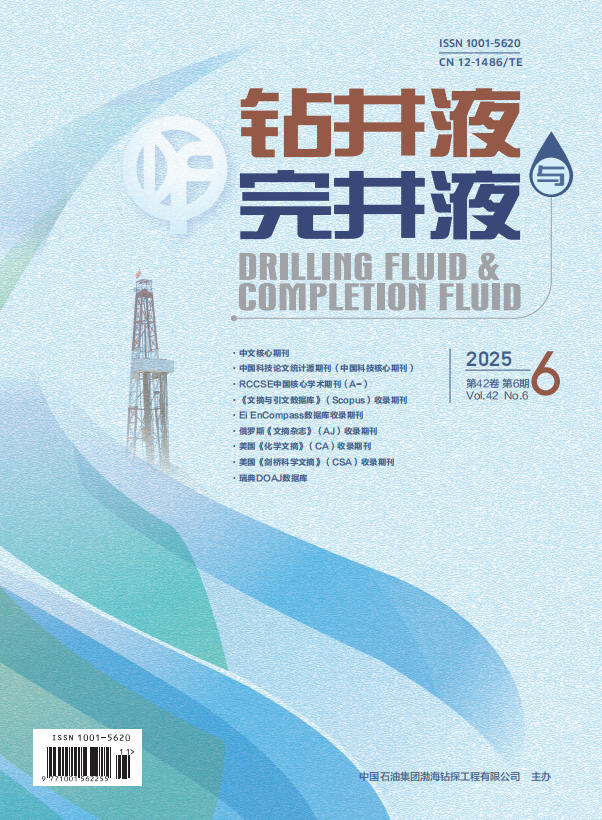Abstract:
To use microemulsion/reverse microemulsion polymers in preparing gel fracturing fluids with sands, an instant emulsion thickening agent BCG-2 has been developed through reverse microemulsion polymerization, with acrylic acid, acrylamide, strong hydrophilic monomers, 2-acrylamido-2-methylpropane sulfonic acid (AMPS), methyl methacrylate, ethylene, sodium salt of vinyl sulfonate etc. as the monomers, and aliphatic alcohol polyethoxylate and cyclohexane compound as the external phase. BCG-2 is soluble in both fresh water and high salinity saltwater. A slick water fracturing fluid and a weak gel fracturing fluid were formulated with a retarded weak crosslinking agent and selected functional agents. In well testing with coiled tubing, the rate of friction reduction of the slick water at a flowrate of 600 L/min was 70.9%, and was increasing with the increase of the flowrate. The weak gel fracturing fluid, after shearing for 120 min at 150℃ and 170 s-1, still had viscosity of at least 80 mPa·s, indicating that the weak gel fracturing fluid is less affected by high shearing rate. The fracturing fluids, after thorough gel breaking, become semitransparent and have no precipitate and almost no residue (< 3 mg/L). The surface tension of the gel-breaking fracturing fluids is 23.87 mN/m. The mixture of the gel-breaking fracturing fluids and a crude oil sample from a well in Yanchang oilfeld can be completely demulsifed in 4 hours. In a feld experiment, a well in Yanchang oilfeld was fractured with an online prepared fracturing fluid of 120℃. The experimental operation has solved many problems encountered in feld fracturing operations in the past, and is of signifcance in promoting fracturing operations toward the direction of simplicity, high effciency and recyclability.



